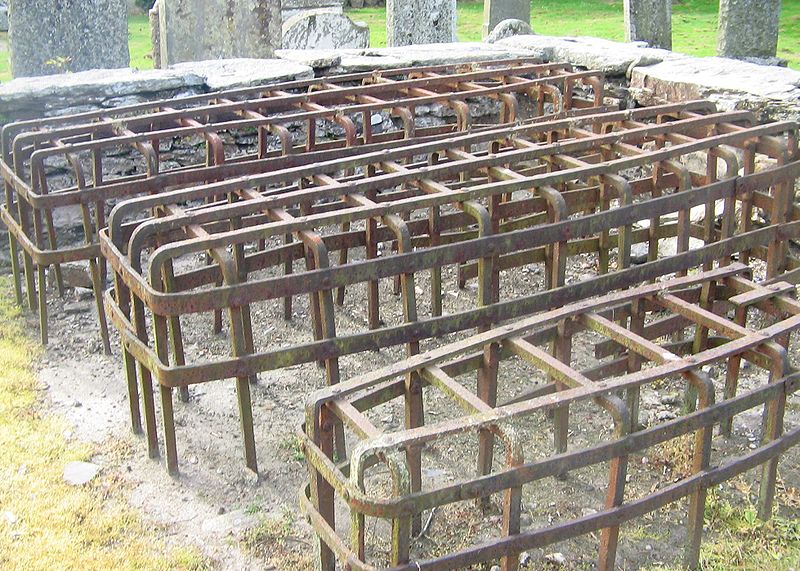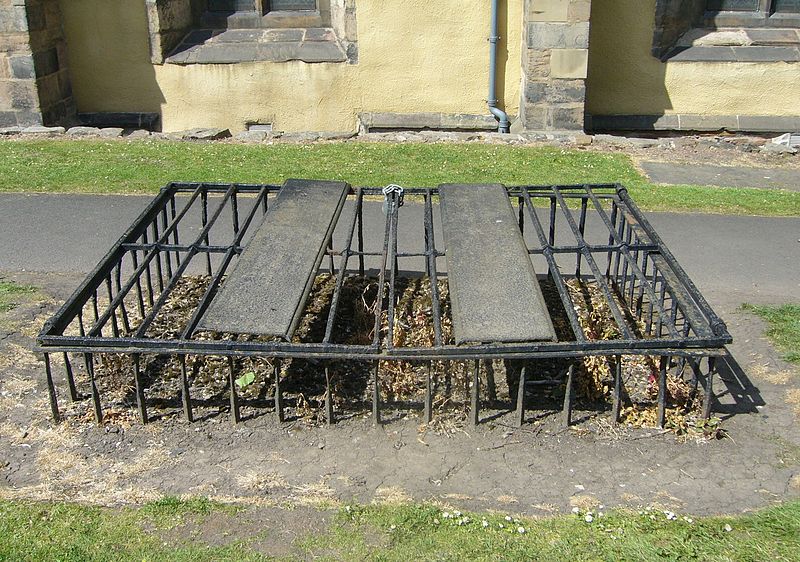Mortsafes
Imagine you were a medical student. Say you and many others were in need of a particular product in order to continue your studies; a stethoscope, for example. In most cases, there’d be enough supply to meet the quantity demanded and, therefore, the stethoscope would be available at a reasonable price. But sometimes, the item is scarce, and suppliers simply can’t locate enough of the item, at least not lawfully. Imagine further that there were an abundant supply of illegal stethoscopes (to continue with this fake example) available; we’d assume that thefts would ensue, and a black market for the item would soon emerge.
That happened in Scotland in the early 1700s. But the medical students weren’t stealing stethoscopes. They were stealing something much less sterile: corpses.
We want our doctors to understand the human anatomy, and a great (albeit gross, to many) way to learn about how our bodies work is to look inside one. For good reason, we’d not allow for the dissection of a living person, so cadavers are used. This has been true for centuries. But Scotland’s cadavers were provided by the government, and only the bodies of executed criminals were made available. Students, unable to further their studies, turned to grave robbing.
The practice lasted for more than a century. The government knew full well what was going on, but not wanting to impede the advancement of medicine, by and large ignored the problem. But around 1816, the public tide turned. The dead’s bodies were believed to be sacred, waiting for the Resurrection; taking the bodies was heretical.

Instead of revolting, the deceased’s survivors put up defenses. Well-off Scots built mausoleums and even watchtowers for their dearly departed, but for most, the expense of these postmortem luxuries put them out of reach. In 1816, an invention, seen above, solved that. Called “mortsafes,” these devices were typically made of iron and, as one could imagine, weighed an immense amount. Buried, in part, within the grave, the mortsafes were difficult at best to remove by a single person working under cover of darkness. Further, they often involved some sort of locking mechanism, as seen below, thereby ensuring that only the deceased’s family, church, or trusted others could easily remove the mortsafe. And by making them removable, the costs went further down. After a few weeks (allowing the body to decompose and therefore lose value to body snatching medical students), the mortsafe was typically removed and rented out to another grieving family.

Because of this, few mortsafes remain on grave sites today. But they were not in use for long. About a decade or two later, in response to the public’s concern about body snatching, the UK passed the Anatomy Act of 1832, which allowed families to donate the bodies of the recently deceased to science.
Bonus fact: Like the mortsafe, the stethoscope was also invented in 1816. But the original one did not resemble the device we are used to today. As seen here, they were simply horns that were pressed (lightly, one hopes) against the patient’s chest to hear his or her heartbeat. Still today, a modified version of this device, called a Pinard horn, is used in some parts of the world as a way to measure a fetus’ heart rate during pregnancy — as an inexpensive alternative to an ultrasound.
From the Archives: Saved by the Bell: Do not mix the contraption discussed there with the contraption discussed here.
Related: “Stiff: The Curious Lives of Human Cadavers” by Mary Roach. 587 reviews, 4.5 stars, which combined suggests it’s probably a pretty good read.
